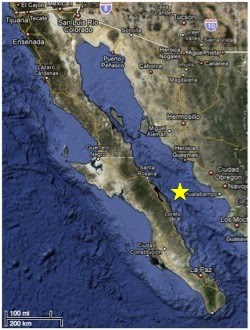



Lauri’s Guaymas Impressions:
17 November: Where did the time go? It is officially our last day at sea and the weather has allowed Alvin one last dive. Professor Brian Cox of the BBC accompanied Chief Scientist Anna-Louise Reysenbach and pilot Mark Spear aboard Alvin to capture some deep-sea footage and observe the sub’s operations.
Even with the rush to finish projects and pack up lab equipment, some of us made time to join Chief Engineer Jeff Little for a tour of Atlantis’ engine room.

It’s a spatially efficient combination of high tech controls and really big, noisy machinery that is divided into roughly three rooms: control, generators, and propulsion. Since the ship is ‘diesel-electric’, all of the power that controls everything from stateroom lights to deck equipment to the ship’s mobility is generated by an array of monster diesel engines.

In case you were wondering, all of that power consumes about 1500 gallons of diesel fuel per day when stationed at a dive site.
Alvin’s last dive for this cruise ended about 5 p.m., just in time for dinner!

Like any vehicle operating in its environment, Alvin needs a bath now and then, and since this was the last dive, it was also bath time. So once the sub was emptied of it’s human cargo, everybody helped spend last moments of daylight scrubbing and rinsing.

We arrive in port late tonight after seven dives and ten days at sea. This has been a fun and productive cruise and I hope that you enjoyed following us as we explored the Guaymas basin hydrothermal vents! Keep checking this blog, as Meg and Kristen are still at sea and will retrieve the 2 thermocouple arrays that are still on the seafloor.






























